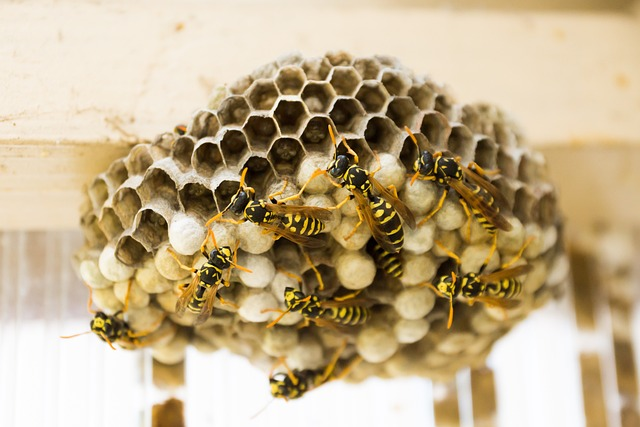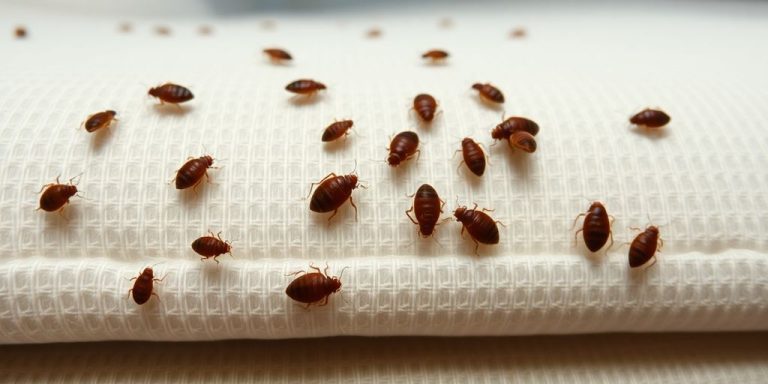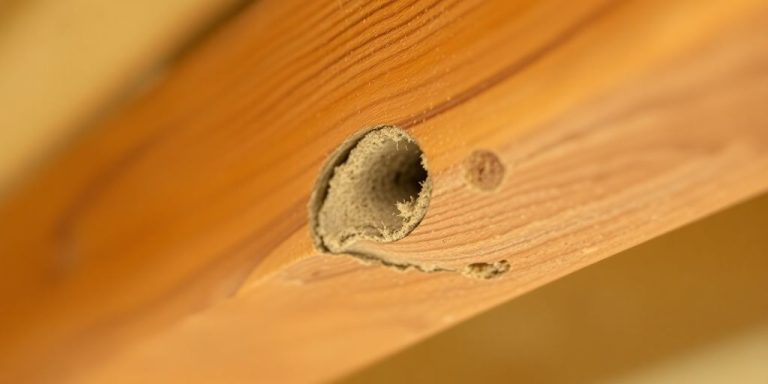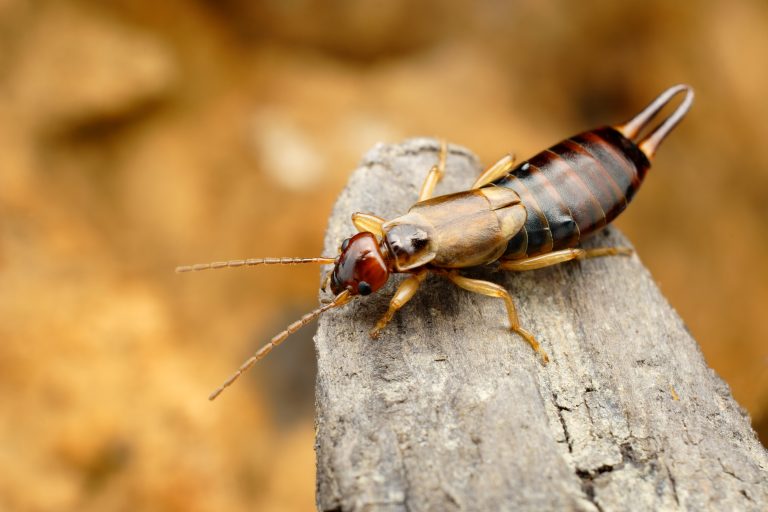Attacked by Wasps
Introduction
As the warmth of summer envelops Oklahoma, it brings with it not just the joy of sunny days and blooming landscapes but also a less welcome aspect of the season: the increased activity of wasps. These winged inhabitants, known for their sharp stings and sometimes aggressive behavior, emerge in numbers, turning leisurely backyard activities and outdoor gatherings into potential sites of unease and danger. In “The Sting of Summer: How to Handle Wasp Attacks in Oklahoma,” brought to you by experts at BugDaddy Ok and Flatline Pest Control, we aim to shed light on the often misunderstood world of wasps. This comprehensive guide delves into understanding wasp behavior, differentiating between various species such as paper wasps, yellow jackets, and solitary wasps, and effectively managing the risk they pose.
The presence of wasps is a natural part of many ecosystems, playing a crucial role in controlling pest populations and even in pollination processes. However, when their paths cross with humans, particularly in residential areas, their presence can be less than harmonious. Understanding why wasps act the way they do, what attracts them, and how to prevent unwelcome encounters is essential. This guide not only navigates the complexities of wasp species in Oklahoma but also offers practical advice on dealing with wasp nests, handling wasp stings, and recognizing when it’s time to call in professionals for help.

With a focus on safety, prevention, and effective response, this article serves as a vital resource for anyone looking to enjoy the Oklahoma summer without the worry of wasp attacks. So whether you’re planning a family barbecue, tending to your garden, or simply enjoying the outdoors, arm yourself with the knowledge and strategies needed to ensure a peaceful coexistence with these ubiquitous summer visitors. Let’s explore the world of wasps in Oklahoma and learn how to handle their presence with caution and understanding.
The Wasp Issue in Oklahoma
A Buzzing Threat: The Reality of Wasp Dangers
Wasps in Oklahoma, unlike bees, are known for their ability to sting multiple times. This raises concerns, especially when considering allergic reactions that can necessitate calling a doctor. Wasps are not just a nuisance; they pose real health risks.
Oklahoma’s Uninvited Guests: Impact on Daily Life
From paper wasps to solitary wasps, these stinging insects have a knack for disrupting outdoor activities. With nests potentially hidden in every nook of your garden, understanding these creatures is crucial for peaceful coexistence.
Wasps attack
If attacked by wasps, remain calm and avoid swatting at them, as this can provoke more stings. Slowly move away from the area, preferably towards an enclosed space. Once safe, remove any stingers gently, wash the area with soap and water, and apply a cold pack to reduce swelling. If you experience severe reactions like difficulty breathing, seek medical attention immediately.
If you’re attacked by wasps, do not panic and run, as rapid movements can agitate them further. Avoid swatting at them or making loud noises, which can increase their aggression. Don’t jump into water; wasps may wait for you to resurface. Also, avoid covering the sting with tight bandages, which can worsen swelling. If stung, seek a safe place calmly and treat the sting appropriately.
Navigating the Wasp’s Territory
The Danger Zone: Identifying Wasp Nests
Wasp nests are often found in secluded areas around homes. Recognizing these nests is the first step in managing the risk of wasp stings.

A Safe Distance: Tips to Avoid Wasp Encounters
Prevention is key. Simple measures such as not exposing sweet beverages and ensuring tightly closed garbage bins can significantly reduce the chances of attracting wasps.
Know Your Enemy: Wasps, Hornets, and Yellow Jackets
Breaking Down Differences: A Comparative Look
Understanding the differences between wasps, hornets, and yellow jackets is important. Each species exhibits unique behaviors and requires different management strategies.
Identifying Threats: Which is Which?
Identifying these insects correctly can help in effectively controlling pest populations and avoiding unnecessary confrontations.
Wasp Real Estate: Where Do They Build Nests?
Common Nesting Sites in Oklahoma Homes
Wasps typically build their nests in areas like roof eaves, tree branches, and under deck railings. Recognizing these sites can help in early detection and removal.
Spotting the Signs: Early Detection Tips
Early detection of a wasp nest can prevent larger problems. Regular inspections around your home during summer can help identify potential nesting sites.
The Danger Scale: Understanding Aggressive Wasp Species
Species to Watch Out For: A Closer Look
Certain wasp species, such as yellow jackets and colony-building social wasps, are more aggressive than others. Being aware of these species can help Oklahomans remain vigilant.
Aggression Levels: When to Be Extra Cautious
While a single wasp lands or flies near you, remaining calm is vital. However, understanding the aggression levels of different species can inform your response.
Keeping Wasps at Bay: Prevention Strategies
Simple Home Modifications to Deter Wasps
Preventive measures like sealing cracks and crevices in your home’s exterior can deter wasps from nesting. Removing potential food sources also plays a crucial role.
Regular Maintenance: Key to Prevention
Consistent yard maintenance, like trimming back bushes and trees, can minimize nesting sites, helping to prevent wasps from establishing a presence.
Decoding Wasp Behavior: Do They Sting Unprovoked?
Myth vs. Reality: Understanding Wasp Aggression
It’s a common misconception that wasps sting for no reason. Understanding their behavior, especially when they feel threatened, is key to managing interactions.
Wasp Psychology: Reasons Behind Stings
Wasps may sting when their nest is disturbed or if they feel threatened. Recognizing these triggers can help in avoiding painful encounters.
Professional Help: When and Why to Call the Experts

DIY vs. Professional Removal: A Risk Assessment
While removing a wasp nest might seem straightforward, it can be dangerous. Professional pest control companies have the expertise to safely and effectively remove wasp nests.
Success Stories: Testimonials from Oklahoma Residents
Hearing from residents who have successfully dealt with wasp problems through professional help can be reassuring. These stories highlight the importance of expert intervention.
FAQs
Q: Can wasp stings cause an allergic reaction?
A: Yes, wasp stings can cause allergic reactions in some individuals. If you experience severe symptoms like difficulty breathing or swelling, it’s important to call a doctor immediately.
Q: How can I prevent wasps from nesting in my home?
A: Preventing wasps from nesting involves regular home maintenance, removing attractants, and sealing entry points. Professional pest control can provide more targeted solutions.
Q: Are all wasp species dangerous?
A: While most wasps can sting, not all species are equally aggressive. It’s important to identify the species to understand the level of danger and the best approach to management.
Q: Should I try to remove a wasp nest myself?
A: Removing a wasp nest can be risky. It’s recommended to contact a professional pest control company, especially for large nests or if the nest is in a difficult-to-reach area.
Q: What should I do if a wasp lands on me?
A: If a wasp lands on you, remain calm and still. Abrupt movements can provoke a sting. Once the wasp flies away, slowly move away from the area.
Conclusion
In conclusion, as we navigate through the warm Oklahoma summers, understanding the behavior and habitat of wasps becomes essential for our peaceful coexistence with these often misunderstood creatures. While the threat of a wasp sting looms large in outdoor activities, recognizing the role these insects play in our ecosystem is vital. Wasps, much like their more amiable counterparts, bees, contribute significantly to controlling nearly every pest insect population, including those that harm our gardens and crops. However, their potential for a painful wasp attack cannot be overlooked.
The key to harmonious living lies in understanding what attracts wasps and how to minimize these factors. From sweet scents that lure them to our picnics to the inadvertent creation of ideal nesting spots, our actions play a significant role in wasp behavior. Intriguingly, some species, like fig wasps, have fascinating symbiotic relationships with plants, showcasing the complexity of these creatures beyond their sting. Yet, despite their ecological benefits, the presence of a wasps’ nest near our homes can be a cause for concern, especially when considering the risk to those with allergies to stings.
Moreover, the intriguing world of wasps offers a glimpse into nature’s intricate designs, from their role in controlling other pest insects to their unique life cycles involving parasitic larvae. While bee stings are often discussed, wasp stings bring a different level of concern due to the aggressive nature of some species, especially when provoked. A wasp attack is often more feared than that of a bee, primarily due to the wasp’s ability to sting multiple times.
Ultimately, our goal should be to respect these creatures’ space and role in nature while taking proactive steps to prevent unwelcome encounters. Whether it’s ensuring our homes and gardens are less inviting to these winged insects or seeking professional help in safely removing a wasps’ nest, our approach should be one of informed caution and respect for nature. Remember, while we might view wasps as a summer nuisance, they are, in fact, an integral part of the ecological balance, playing a role that benefits us in ways we might not always see. By understanding and respecting these fascinating insects, we can enjoy our summers with a greater sense of harmony and safety.



